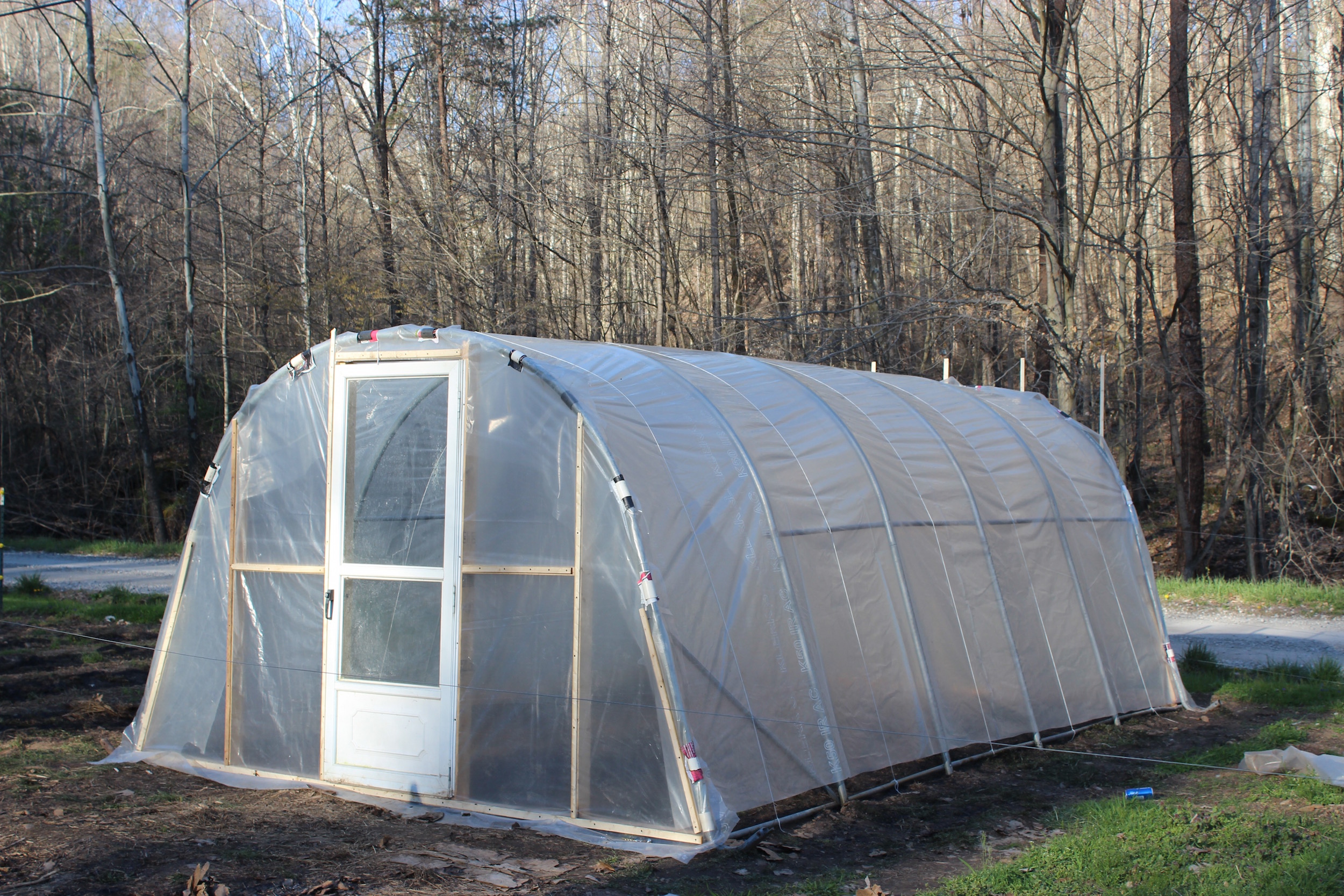
Fall is officially upon us but that doesn’t mean it’s time to stop growing. If you visited the Heritage Harvest Festival this past weekend you may have gotten a chance to see SESE’s Ira Wallace and Pam Dawling of the Twin Oaks Community give a talk on winter gardening. They talked crops, season extension, and how they keep growing through the winter. In case you missed it here’s a few tips to get you started with a winter garden of your own.
What to Plant
There’s a surprising number of crops that can be grown in a winter garden. Selecting plants and varieties that have been bred for fall and winter gardens will increase your success.
Greens
One of the largest categories is hardy greens. Many greens are quick growing and tolerate low temperatures making them ideal for overwintering in the Southeast. Consider planting mustard greens, lettuce, spinach, collards, kale, cress, arugula, and Swiss Chard.
Root Crops
Many root crops are also quite cold hardy. Try beets, radishes, turnips, carrots, and kohlrabi. Even when they’re not growing they can be heavily mulched and left in the ground for fresh use throughout the winter.
Brassicas
Along with the brassicas that are typically considered cooking greens like collards and kale broccoli and cabbage are also quite cold tolerant. However, these typically need to be seeded or transplanted well in advance. Depending on your zone you may need to plant these in the middle of summer for an early winter harvest. Alternatively, fall planted crops may be overwintered to produce an extra early spring harvest.
Garlic & Onions
Here in Virginia, we start bulb onions in the fall and overwinter them in cold frames. We’ve found the helps us grow large bulbs. This method may not work for those in the deep south or northeast.
Additionally, crops like garlic and perennial onions should always be planted in the fall for a harvest the following summer. For more information on these visit our previous post, The Beginner’s Guide to Growing Great Garlic, Perennial Onions, & Shallots.
When to Plant
Exactly when you plant is largely dependent on your plant hardiness zone. If you don’t know what that means, check out our post, Everything You Need to Know About Plant Hardiness Zones.
You can also find a planting calendar for zone 7 here or get personalized planting reminders when you use our garden planner.
It’s also important to realize that even if you have a greenhouse, plants’ growth slows down when they get less than 10 hours of sunlight per day. Planting on time is crucial if you want to harvest during the fall and winter.
Cold Protection

Even the simplest protection from cold, wind, and frost can greatly extend your harvest season.
Cold Frames
Cold frames can be as simple or as fancy as you want. At SESE we’ve made many quick cold frames using straw square bales and corrugated plastic sheets. They work wonderfully and the straw can be used as mulch when the bale begins to break down and no longer makes an effective cold frame. If you want a permanent structure that looks nice many people build wooden frames and use old windows on hinges for lids.
Cold frames are ideal for starting cold tolerant crops in the fall and spring and perfect for small salad greens. It’s important to remember to vent them on sunny days because they can heat up quickly.
Row Cover/Low Tunnels
Much like cold frames, you can create low tunnels on nearly any budget. All you need is hoops and clear plastic or a row cover type fabric. Hoops can be made from PVC pipes and stakes, conduit, other tubing, or even flexible saplings that have had their rough spots sanded down. Putting row cover over hoops is much more effective at preventing frost damage than just laying fabric over the plants.
When you’re purchasing row cover it’s important to look at what weight it is. During the fall lighter weight options are a good choice. They provide some protection from the chill and keep out pests but still let light through. At SESE we’ve used tulle fabric (like the kind tutus are made from) as a cheap alternative. During the winter, when plants aren’t growing much anyways you should select heavier row cover even though it blocks more light. It will provide more protection from wind and cold.
Clear plastic is also an option. However, unlike row cover it isn’t breathable. Clear plastic will quickly heat up on a sunny day so it needs to be vented. Row cover is often a better option for those with hectic schedules.
High Tunnels/Greenhouses
High tunnels and greenhouses are ideal for winter production as well as seed starting during the spring. During the workshop mentioned above, Pam Dawling discussed how they use a hoop house with two layers of plastic to grow year round at Twin Oaks Community. They’ve found that their hoop house keeps the inside air 7°F warmer than outside! They also found that plants in the hoop house tolerate temperatures 14°F colder than they would if they were field grown.
Pam Dawling has great information about hoop house growing on her website, Sustainable Market Farming, and on SlideShare.
Like other methods that use plastic, hoop houses can heat up on sunny days and sometimes need to be vented. You can add further protection by using row covers within your hoop house.
Having a greenhouse or high tunnel is a dream for many small grower and gardeners but it can be quite the investment. During the workshop, Pam Dawling also discussed one way small market growers can get financial assistance when building a high tunnel. Look at grants through the Natural Resources Conservation Service High Tunnel System Initiative.
You can also build your own greenhouse. We mention some ideas in this post or you can find others DIYs.
Happy gardening!
